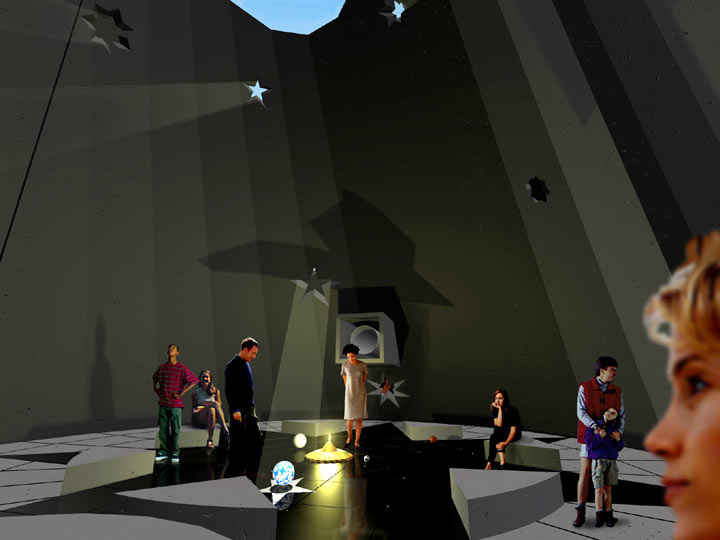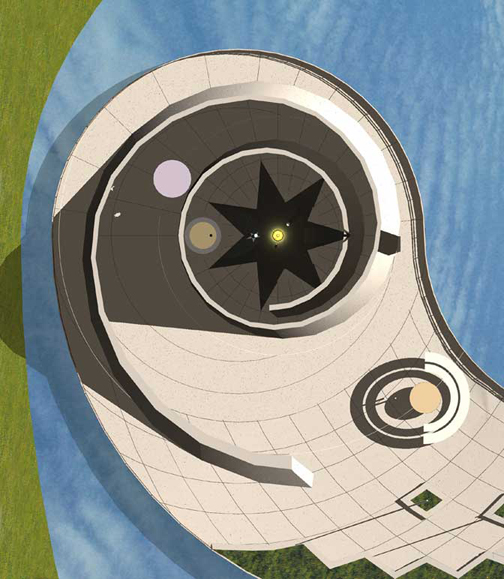SITE PLAN
Located just north of the Gallaxy Center at the Space Port at Cape Canaveral the memorial site includes a water feature, here designed to form a symble of a unified duality (the Taoist's yin-yang) joining the Crescent Pool to the Pool of Tears and making the memorial site a tenuous peninsula, like our human link to the earth nest and like the geography of the state of Florida.
There are two facsimile scales used in the design. Facsimiles of the solar system planets are presented at a larger scale while the planet orbital distances are presented at a smaller scale so that both may be made referential and sensable to the site and human scale.
The spiral wall of the memorial is intended to connote things like spiral gallaxies and orbital paths.
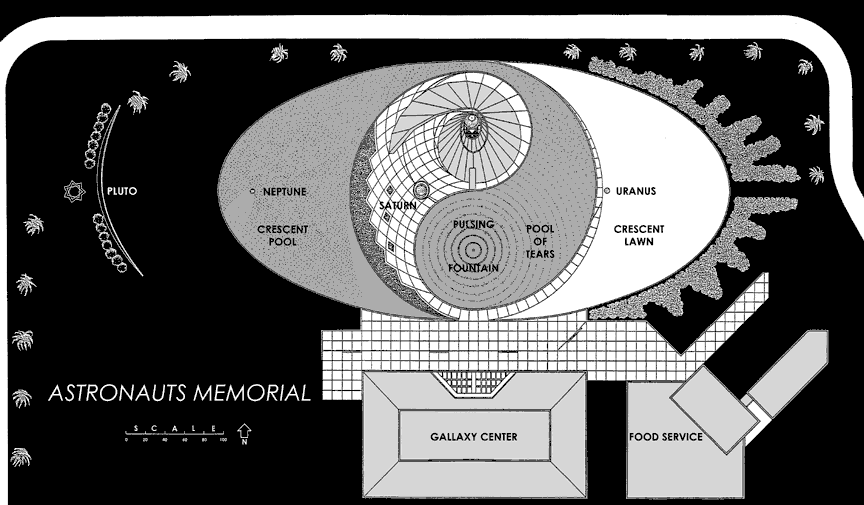
POIGNANT SKY
The cutting off of the spiral cone creates an inflection towards the sky as a trascendent void becomes the object of focus; the "presence of the absence".
It also gives visual acces to the sky from the inner space and prevents the memorial design from overstepping the 40 foot height limitation of the memorial competition brief.
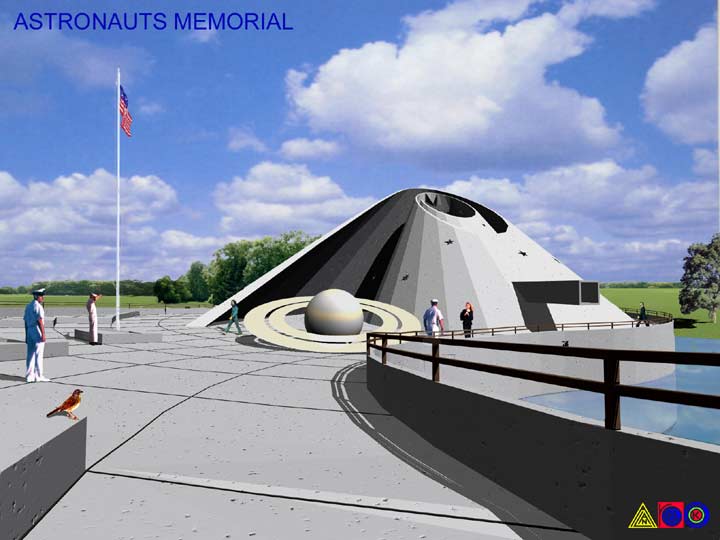
SITE ENTRY
At the point of site entry the memorial spiral wall peninsula is the main focus, framed by the water pools. There is a pulsing fountain at the focus of the Pool of Tears which can be regulated to accentuate significant moments; e.g., the pulsing could stop at the anniversary moment of the challenger disaster.
The rectangular element penetrating the spiral wall contains a 32 foot organ pipe which would sound at the time of the solar meridian and at the anniversary moment of the Challenger disaster but it would stop in sychrony with the fountain.

LINES OF FOCUS
The spiral wall would be formed from a series of tangent planes thus creating lines emphasizing the focus on the firmament.
The spiral form is legible as a line giving a sense of the path of circulation and an anticipation for the experience of the memorial visit.
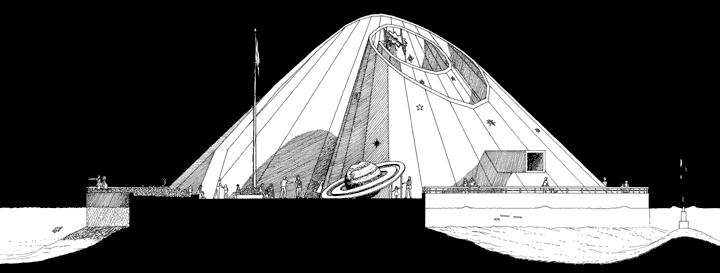
MEMORIAL PLAN
The spiral wall creates a progressive compression as it spirals towards the central space. The outer land circle base is the size of the sun at the scale model of the planet facsimiles.
Jupiter's model creates an anticipatory threshold along the entry sequence. The overhead organ pipe (shown with dashed lines) on the east side creates a compression threshold at the point where visitors get their first glimpse into the central space which includes models of Mars, earth, Venus, and Mercury, and a central eternal flame representing sol and commemorating the souls of the memorialized astronauts.
A seven pointed star relates to several significant symbolic things: the seven original visible planets (sun, moon, Mercury, Venus, Mars, Jupiter, and Saturn), the Meercury 7 astronauts who were the first Americans in space, and the team of seven astronauts who died in the Challengewr disaster which precipitated this memorial competition.
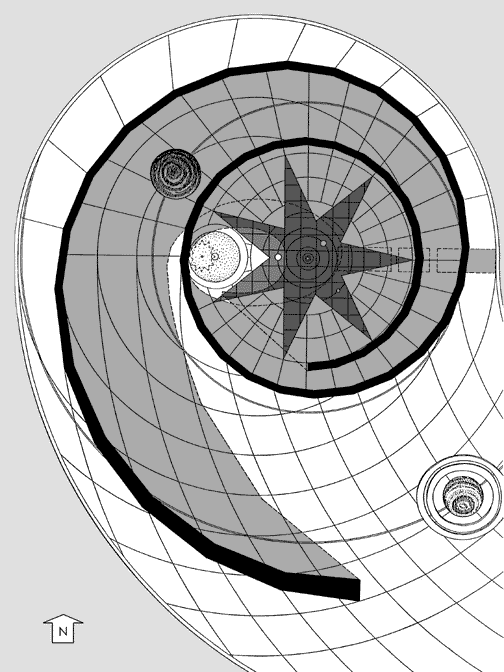
CHRONOMETRIC SOL
There are two stellar apetures that align with the model of the planet earth and the sun at the moment of the challenger disaster. In this manner, the sunlight will turn on then, after a short poignant firery burn, the light will go out!
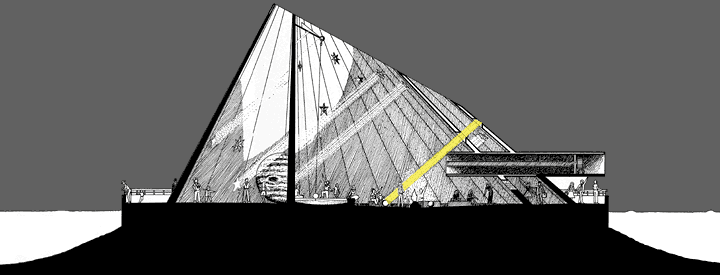
TECHNOLOGY PENETRATING THE COSMOS
The industrial form of the rectangular prism containing the organ pipe penetrates the metaphorical spiral wall as the advancements of human technology allow our going into outer space.
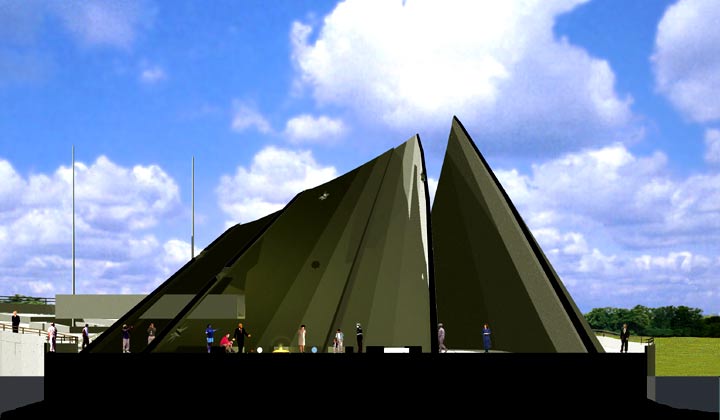
FIRST GLIMPSE - SECTION
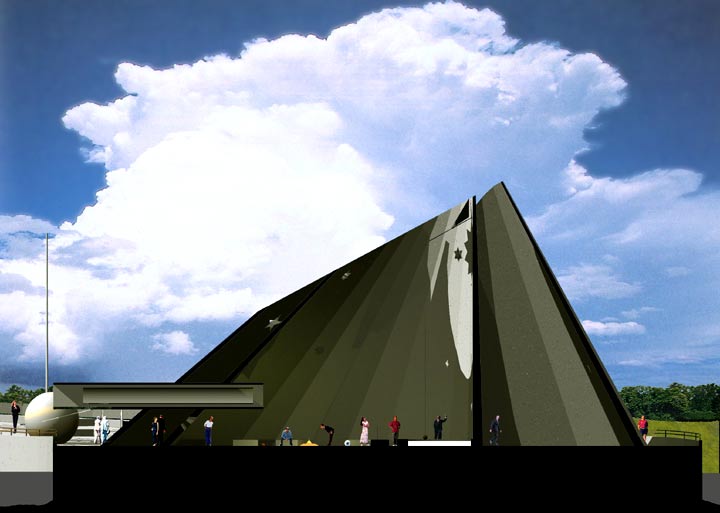
LIGHT BEAMS
"Presence of the Absence"
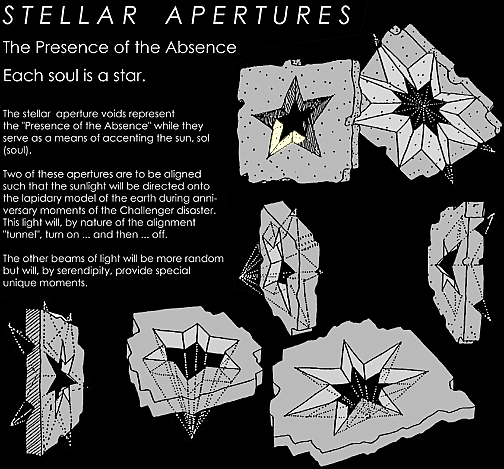
FIRST GLIMPSE
Here, where the first contact is made with the inner space of the memorial, is also where the walls have their lowest leaning slope, impinging most on the personal space of the visitors, ginvg them some empathy with the tight quarters of the astronauts space vehicles. The austerity of this part of the visit also makes the sky a precious commodity.
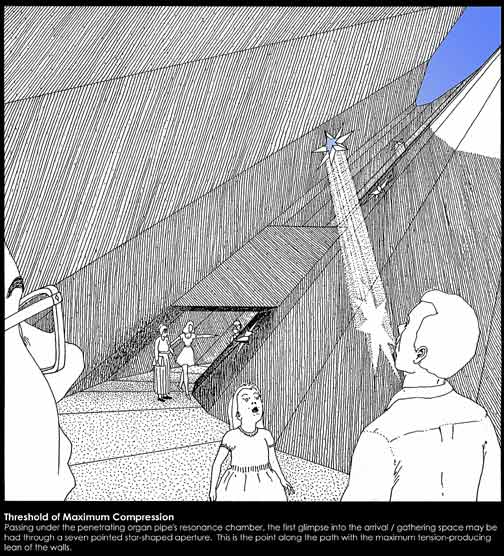
ARRIVAL THRESHOLD
Entry is realized with a view towards the infinity symbol shaped analemma mark which indicates the moment of solar noon with the 12-pointed solar gnoman disk controlling a beam of sunlight. The disk also supports a Foucault pendulum. Both the analemma and the pendulum show the relative motions of the sun and earth. The instant pictured here is the moment of the sun reaching the solar meridian on the summer solstice.
ANALEMMA
The vignetted beam of light strikes the analemma infinity figure at different points on each day of the years thus acting as a sort of calendar. It demonstrates the changing declination of the sun and the equation of time for each day of the year. This device compares the apparent solar time with the mean solar time which is a result of the earth traveling at different velocities depending on what part of the orbital path it is on (e.g., perihelion vs. aphelion). In effect this device makes this perceptable.
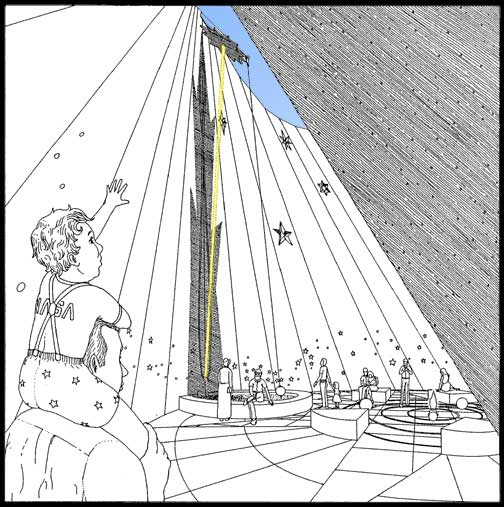
THE LIVING EARTH
A Foucault pendulum would hang from the lower tip of the solar meridan gnoman star and would mark trails in the sands of time below. This would make the rotation of the earth a sensible phenomenon and might lead visitors to observe the subtlely slow trackig of the beams of sunlight throughout the inner space.
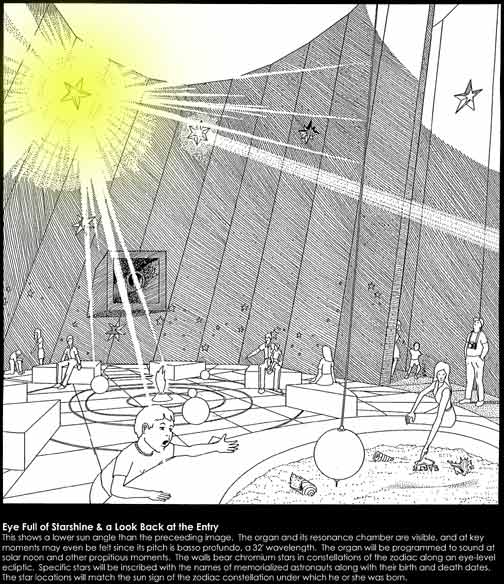
PLANETARY MODELS
Each planet model would relate to either the planets appearance or symbolic mythological name.
Mercury would be a silvered sphere refecting a fish-eye view of the entire inner space; this parallels the god Mercury's role as messenger of the gods.
Venus would be a white marble sphere resembling its cloud covered appearance and relating to the Greek material of fine art.
The earth would be fabricated from a varigated blue and white granite.
Mars would be a 4 vertex breakdown Corten steel geodesic sphere relating to its being the forth planet form the sun and consisting of a ferous metal related to the metal of war.
Pluto would be made of black basalt representing its funerary symbolic name by refernce to the basalt funerary works of the Egyptians. The other larger gaseous planets would be made by layering various stone materials to resemble therespective image of each planet.
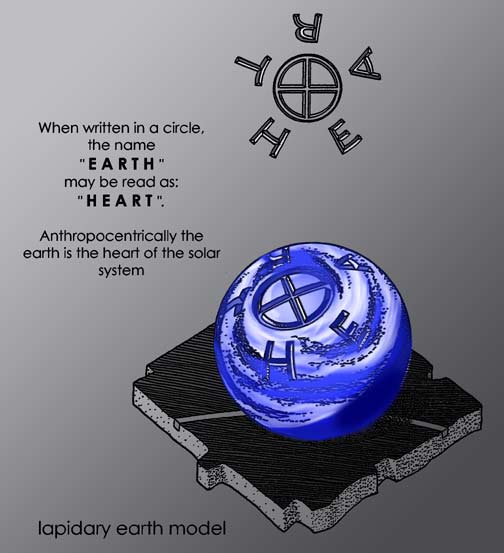
INNER SPACE
Here can be seen the effects of a solar/stellar light beam and the presence of the ogan pipe mass penetreating the spiral wall of the memorial. The first glimpse aperture is visible beneath the organ pipe.
The moment portrayed here is the exact moment anniversary time and date ot the challenger disaster; note the sunlight illuminating the model of the earth.
